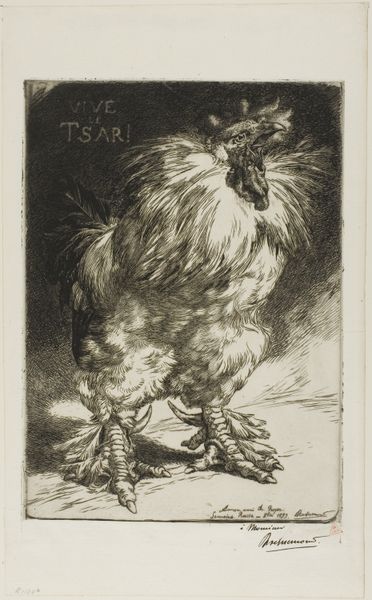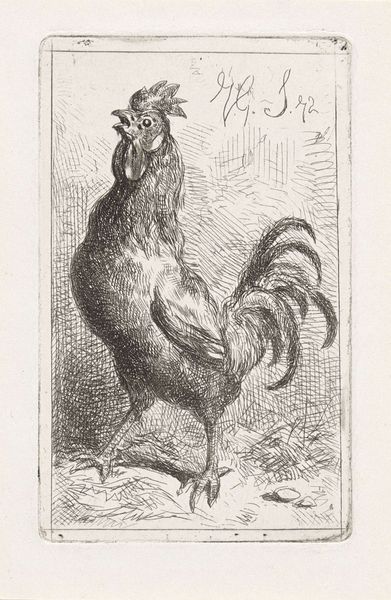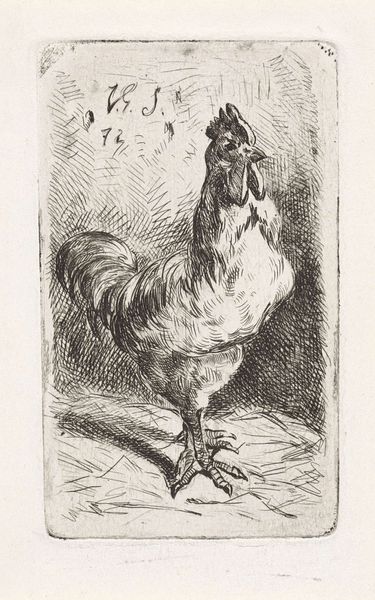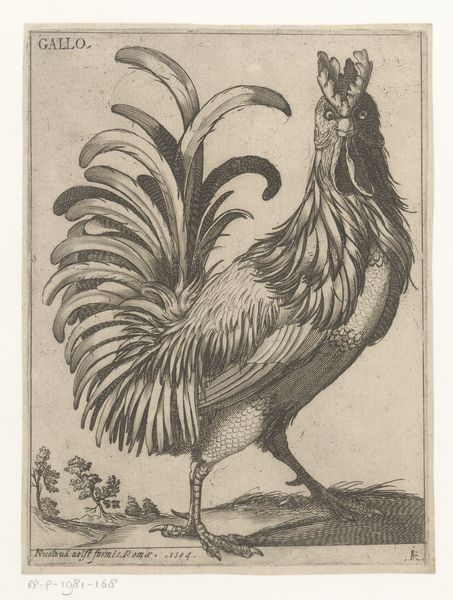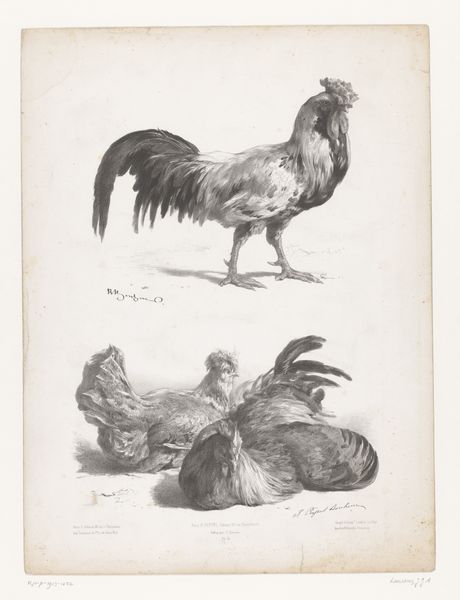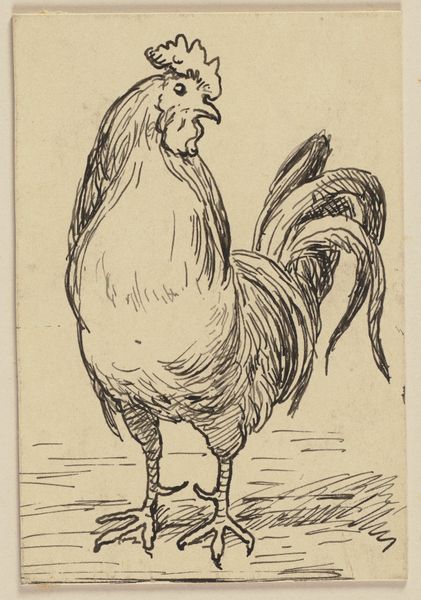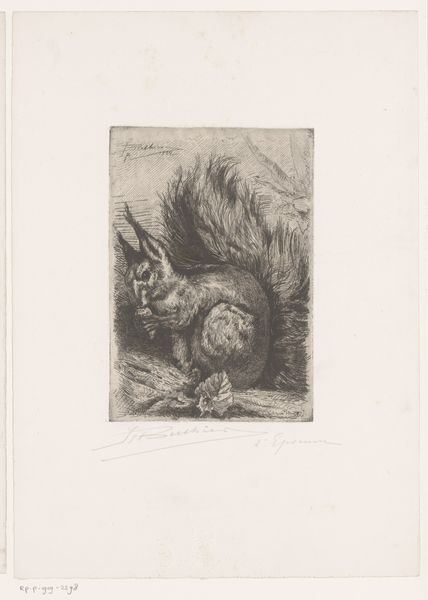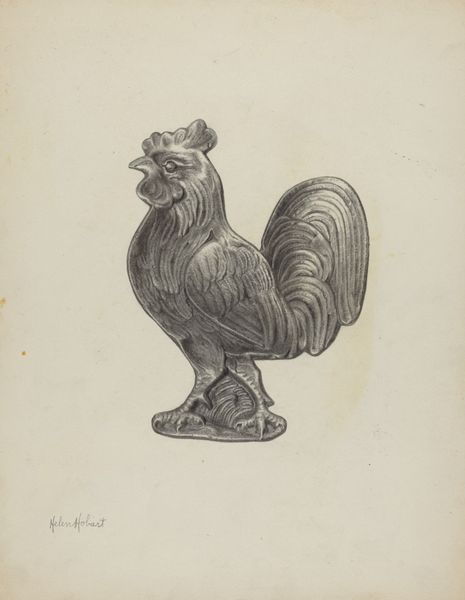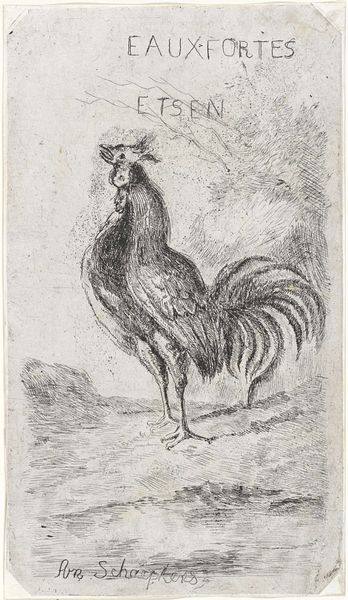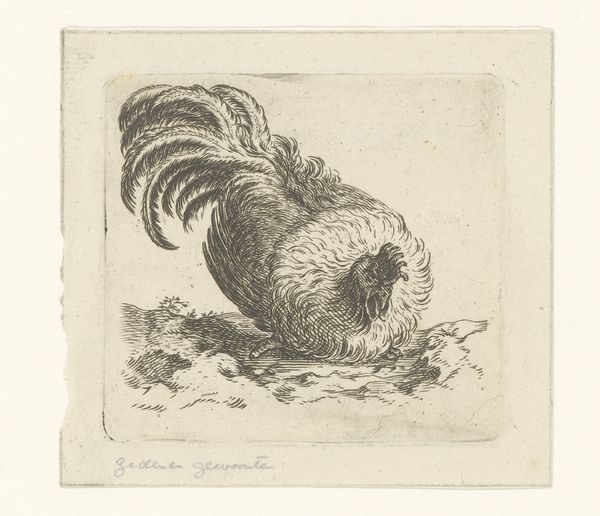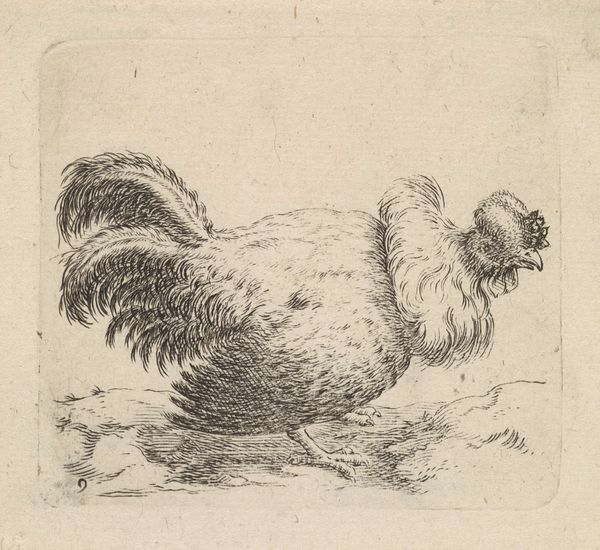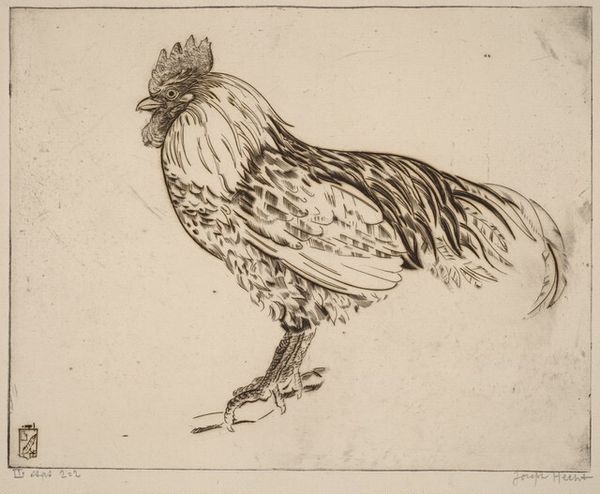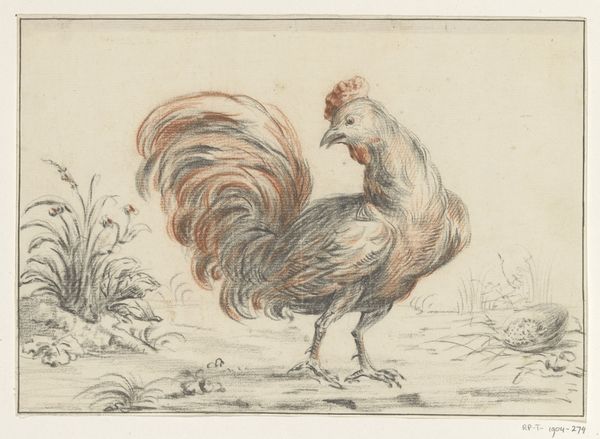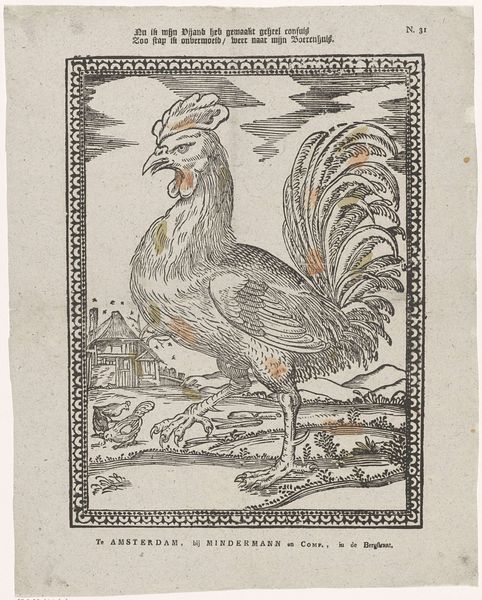
Dimensions: 12 3/16 x 8 13/16 in. (30.96 x 22.38 cm) (plate)15 9/16 x 10 3/4 in. (39.53 x 27.31 cm) (sheet)
Copyright: Public Domain
Félix Bracquemond created this etching, titled "The Gallic Cock–Long Live the Czar!", using metal plates and etching tools. The image emerges from the controlled corrosion of the metal, where acid bites into the lines drawn by the artist. Bracquemond was interested in capturing the texture and form of the rooster through this painstaking process. The etching technique allows for incredibly fine detail, and here you see the use of closely spaced lines to create tonal depth, emphasizing the volume and texture of the bird’s feathers. The printmaking process itself, like many forms of craft, involves a kind of labor and skill that doesn’t always get recognition in the world of fine art. In the 19th century, the ability to reproduce images democratized art, making it accessible to a wider audience. In this context, Bracquemond's work reflects the intersection of craft, art, and the socio-political climate of the time. By emphasizing the material and the making, we recognize the inherent value and complexities embedded in this print.
Comments
minneapolisinstituteofart almost 2 years ago
⋮
When the Paris Salons first admitted photography in 1859, it was a blow to the original print. Félix Bracquemond countered by cofounding the Society of Etchers in 1861 and issuing albums of original etchings. For L'Estampe originale a generation later, Bracquemond celebrated the unlikely alliance between France and Russia, finalized in 1894. The French were elated to have Czar Alexander III's protection against Germany. Here the rooster, symbol of French nationalism, crows about the Russian flotilla visiting the French Mediterranean in 1893.
Join the conversation
Join millions of artists and users on Artera today and experience the ultimate creative platform.
